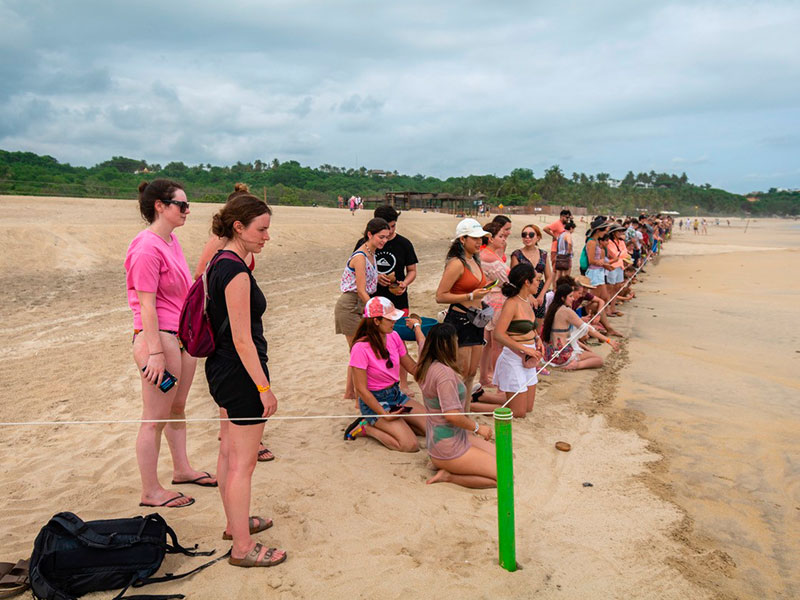
Photo: Ernesto J. Torres
Baby Turtle Releases in Puerto Escondido
THE NEW ZEALAND COVID LOCKDOWN HAD FINALLY ended, so Stefanie Schmitz and Mark Hepburn decided to travel east to Mexico and do volunteer work at a turtle sanctuary.
They found ViveMar through a broker who, for a fee, connects international volunteers with environmental groups. That’s how the world works now. In Mexico, the international volunteers pay around $500 U.S. for one week of work, a bed in an on-site dormitory and some meals. Stefanie and Mark chose ViveMar because they were convinced that the money would be put to good use for the preservation of sea turtles. But we found out that the brokers keep over 50% of what they collect. Now ViveMar is trying to negotiate better terms.
Stefanie and Mark’s volunteer work included assisting with the night patrols from Bacocho Beach to Palmarito which occur on 3-hour shifts from 9pm to midnight, midnight to 3 a.m. and 3 a.m. to 6 a.m. Turtles mostly come ashore to lay their eggs on moon-lit nights. They would collect the eggs, around 100 in each nest, as soon as they were laid - sometimes even while they were being laid - and bring them to one of the hatcheries.
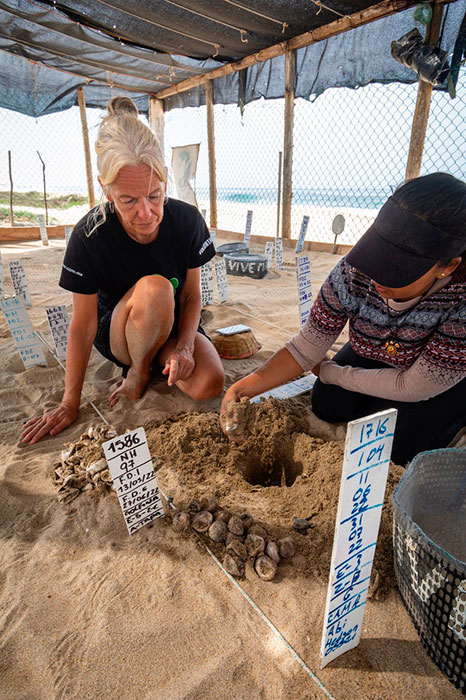
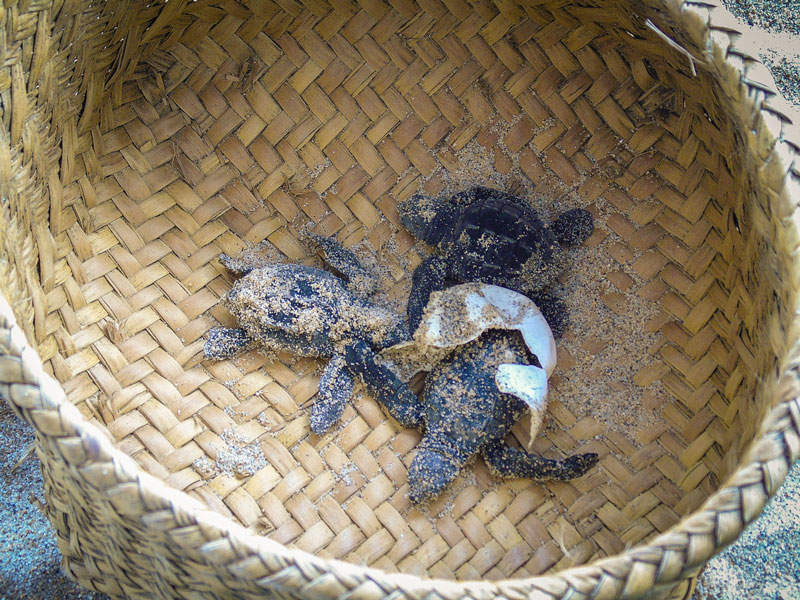
They had to act fast before poachers got them. Sea turtles are protected species in Mexico, but turtle eggs (called limones blancos on the black market) are part of the local cuisine and are also reputed to be nature’s Viagra. Street vendors sell them for 40 pesos a dozen in the neighborhoods of Puerto Escondido and more on Zicatela beach. The ViveMar team have reached an understanding with the poachers, whoever gets there first gets to keep the eggs, and, in turn, the poachers do not steal from the hatcheries.
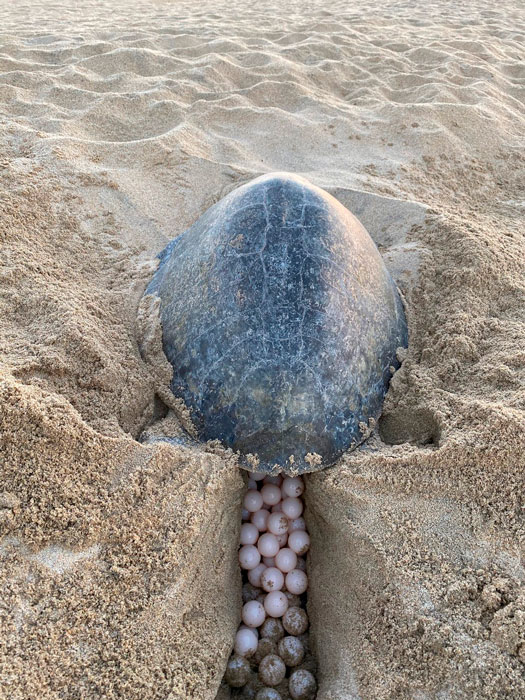
Another problem is that some vacation-home-owners or renters in Palmarito insist on lighting up the beach in front of their houses. After laying their eggs, the turtles find their way back into the sea by following the reflection of the stars and moon on the water. If the beach is lit up, they do not know in what direction to go.
An Olive Ridley turtle, the most common turtle on the Pacific coast, spends around 15 years in the deep sea before they mature and return to land to lay eggs. Only the females go on to the beach, the males that impregnate them stay off the coast. One female may be impregnated by as many as eight males, which assures genetic diversity. The females keep the semen in a sac and will come ashore various times over a period of weeks to lay their eggs before returning to the sea off the coast.
Olive Ridley turtles are famous for always returning to the beach where they hatched, but not to the exact spot. So a turtle released at the Bacocho hatchery may return to the beach in front of Vivo Resorts in Palmarito or to Zicatela and all points in between. The leatherback turtles, which are larger and travel from Mexico to Chile and beyond, also return to the coast where they had hatched, but not necessarily to the same beach. A leatherback that hatched in Michoacán can return to leave her eggs in Acapulco or Bacocho or Salina Cruz. It has to do with the currents.
Baby Olive Ridleys hatch after around 12 weeks. Thousands of baby turtles are released by volunteers every night, including those released by tour groups. The great majority will soon fall prey to sea birds and other predators or get caught in fishermen’s nets and plastic in the ocean. However, those that are released from hatcheries have a perhaps 50% greater shot at survival since they are protected from dogs and other predators on the beach. But even the survivors face sharks once they get to the open sea. This explains why turtles lay so many eggs.
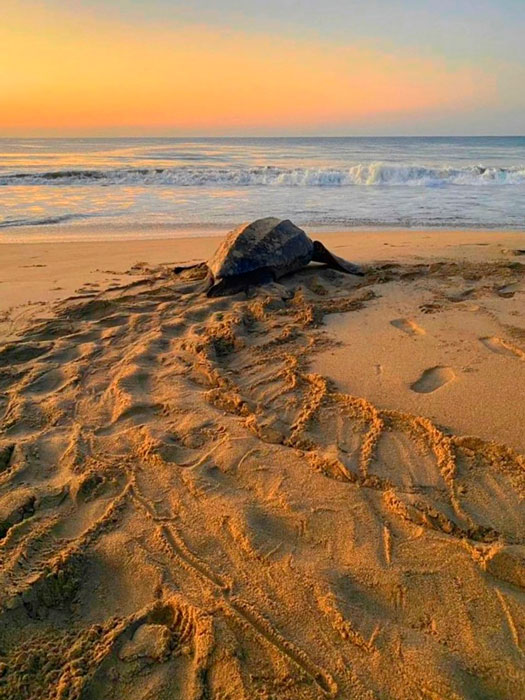
Turtles dig deep holes near the high tide mark to hide their eggs, but they do not attempt to hide their tracks, which is why the hatcheries (and the poachers) look for the nests immediately after the eggs are laid. In the hatcheries the eggs are put in nests that are labeled to show the species, where the eggs were found, and the date they were laid.
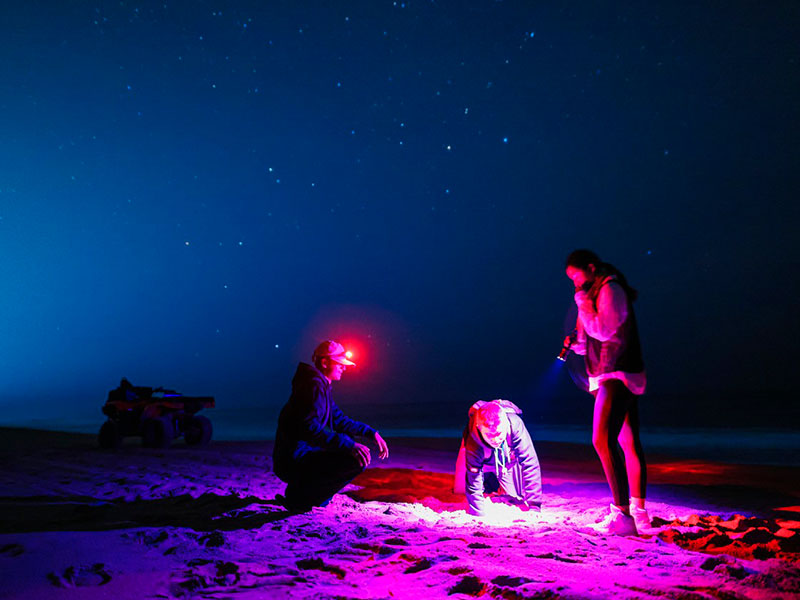
Photo: ViveMar
How, I wondered, could a tiny hatchling dig its way out of the deep holes? When the firstturtles hatch they communicate with the others so that they all hatch together and make their way up. A few turtles, who did not receive the message, remain at the bottom and, if they are in a hatchery, they are rescued by volunteers whose job it is to clean the nests of egg shells and give the babies a second chance.
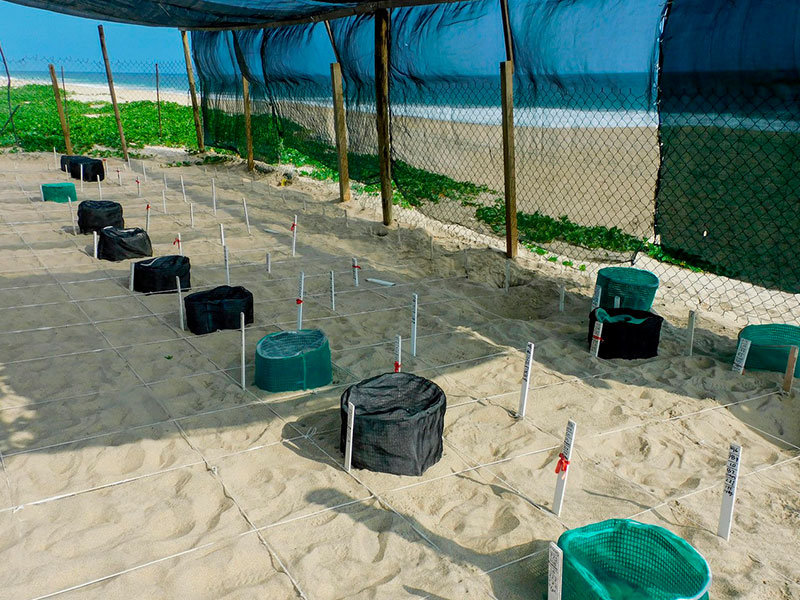
There are various organizations in Puerto that have hatcheries and invite the public to participate in the release of baby turtles. They all charge 100 pesos to release one turtle. The money goes towards the cost of maintaining the hatcheries, the quads that are used to look for the eggs, and salaries. They also accept donations. The biggest is ViveMar which has hatcheries in Bacocho, Punta Colorada, Agua Dulce and Palmarito (next to Origen). The oldest is Campamento Palmarito on Delfines beach; it was founded in 2005 by the veterinarian Marcelino López Reyes. On the beach at the Barra de Colotepec you will find Campamento Boca Barra.
Generally, the release begins at 4 pm (standard time). It’s always best to call first because there are days in which there are no hatchlings.
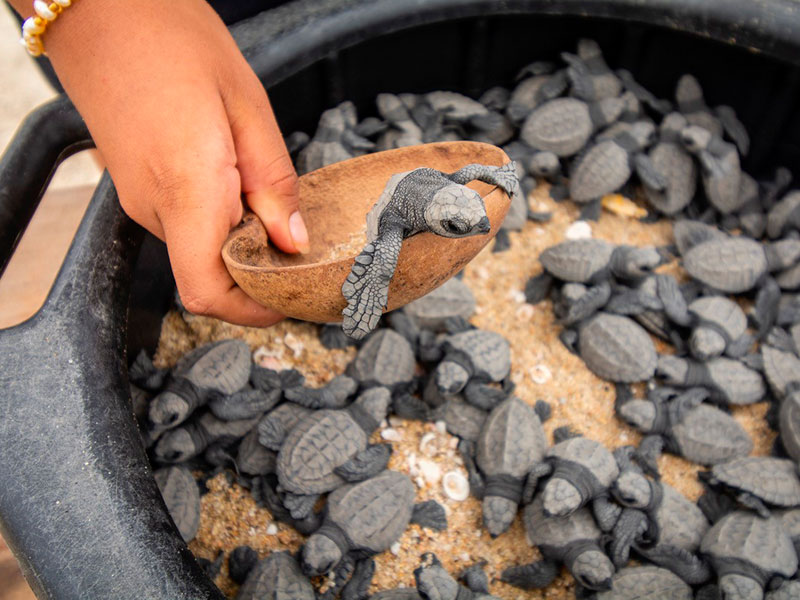
ViveMar
https://vivemar.com.mx
+52 954 114 5568
Campamento Palmarito
https://campamentopalmarito.com
+52 958 104 4707
Campamento Boca Barra
+52 954 113 5992










